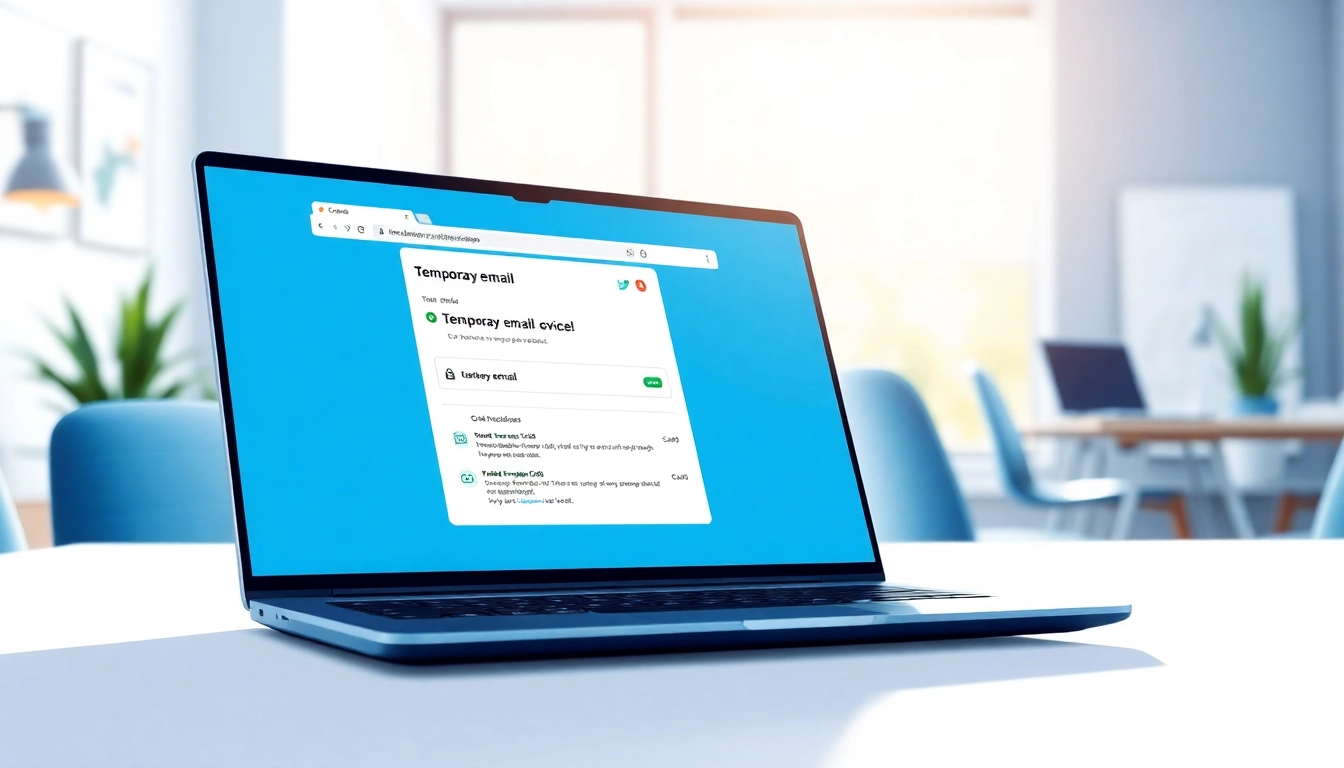Understanding Temporary Email
What is Temporary Email?
Temporary email, also known as a disposable email address, is a service that allows users to create email addresses for short-term use. These addresses are often used to receive messages without disclosing personal information, thus protecting the user’s primary email address from spam and unwanted solicitations. These emails usually expire after a preset period or once they have been accessed, making them an effective solution for online registrations, trials, and communications that do not require long-term interaction.
Benefits of Using Temporary Email
The advantages of utilizing temporary email services are numerous:
- Privacy Protection: Users maintain their anonymity since these emails do not link back to personal information.
- Spam Control: By providing a temporary email address, users can avoid spam in their primary inbox.
- Ease of Use: Setting up a temporary email is usually quick and straightforward, often requiring no registration or personal information.
- Security: Since these emails expire, the risk of long-term data breaches or hacking attempts diminishes significantly.
- Convenience: Ideal for one-time registrations or trials without the commitment of providing personal details.
How Temporary Email Works
Using a temporary email is straightforward:
- Select a temporary email service provider.
- Generate a temporary email address, which can be done in seconds.
- Use this address whenever you are required to provide an email online.
- Check the temporary inbox on the service provider’s platform to access any received messages.
- The email address may self-destruct after a certain period or after message retrieval, ensuring privacy and reducing clutter.
Setting Up Your Temporary Email
Steps for Creating a Temporary Email
Creating a temporary email is a hassle-free process. Here’s how you can do it:
- Choose a Service: Research different temporary email services to find one that meets your needs.
- Email Generation: Once a service is selected, navigate to the homepage and click on the option to create a new temporary email.
- Use the Email: Copy the temporary email address and use it for your desired online registrations or communications.
- Access the Inbox: Return to the temporary email service’s site to check any incoming messages.
Choosing the Right Service
Not all temporary email services are created equal. When selecting the right one, consider the following factors:
- Reputation: Look for services with positive user reviews and a good track record for reliability.
- Features: Some services offer added functionalities, like custom email addresses or longer expiration times.
- Security: Ensure the service uses proper encryption and guard against phishing attacks.
- Ease of Use: A user-friendly interface can make the process of creating and managing temporary emails much simpler.
Customizing Your Temporary Email Settings
Many temporary email services allow users to customize their email settings. This customization may include:
- Expiry Duration: Choose how long your temporary email will remain active.
- Email Format: Some services may let you modify the structure of the email address.
- Notification Settings: Determine how you’d like to be notified about new messages.
Best Practices for Temporary Email Usage
When to Use Temporary Email
Temporary email addresses are particularly useful in several situations:
- When signing up for newsletters or promotions where the user does not wish to receive subsequent marketing emails.
- For trials of services that require an email address for registration but don’t warrant long-term communication.
- When interacting with websites that require email verification to access content, such as forums or downloads.
- In online sales or transactions where the user wants to remain anonymous.
Avoiding Common Pitfalls
While using temporary email offers many advantages, there are common pitfalls to avoid:
- Ignoring Expiry Limits: Remember that these services often delete emails after a designated period. Ensure you retrieve crucial information before it’s gone.
- Misusing for Important Communications: Avoid using temporary email for important communications that require follow-up since these inboxes may not be regularly monitored.
- Using Unreliable Services: Stick with trusted services to prevent data breaches or the loss of sensitive information.
Maximizing Privacy with Temporary Email
To ensure maximum privacy when using a temporary email, consider implementing these strategies:
- Use Different Emails for Different Sites: This minimizes the risk of spam from any one source.
- Avoid Personal Information: Don’t provide additional personal information that could compromise anonymity.
- Review Privacy Policies: Before using a service, check their privacy policy to understand how your data may be used.
Applications of Temporary Email
Using Temporary Email for Online Sign-Ups
Taking advantage of temporary email for online sign-ups can alleviate many issues associated with unwanted marketing. Users can create a temporary address specifically for one-off registrations without the risk of compromising their personal inboxes. This method is especially beneficial for trials or services that do not require ongoing interaction.
Temporary Email for Marketing Trials
Many individuals demo a product or service without real commitment to avoid being bombarded with marketing emails. By utilizing a temporary email, users can access trial opportunities and later discard the email address once the trial is over, maintaining their digital space clear of clutter.
Temporary Email in E-Commerce Transactions
Online shoppers benefit from temporary email addresses by using them for purchases that don’t require continuous correspondence. Using these disposable emails during the checkout process helps keep personal email inboxes clean while providing a necessary layer of privacy against potential data misuse in the electronic marketplace.
Future of Temporary Email Services
Emerging Trends in Temporary Email
As concerns about digital privacy elevate, the demand for temporary email services has heightened. Expect to see continued evolution in the sophistication of these services, such as:
- Enhanced Security Features: Including encryption and advanced phishing protection.
- Integration with Other Privacy Tools: Services may start integrating features such as VPNs or identity protection tools to offer comprehensive privacy solutions.
- Improved User Interfaces: Making these services easier and more efficient to use.
Challenges and Opportunities Ahead
While the future looks promising, temporary email services face challenges:
- Regulatory Considerations: As privacy laws tighten, temporary email services must navigate compliance regulations.
- Market Saturation: With many options available, standing out in a crowded market can be challenging.
- User Education: Ensuring users understand the proper and effective use of temporary emails is essential for maximizing benefits.
Conclusion: The Role of Temporary Email in Digital Privacy
In an age where data security and privacy are paramount, temporary email services provide individuals a valuable tool for safeguarding their personal information while navigating the digital landscape. With multifaceted applications ranging from online sign-ups to e-commerce transactions, temporary email addresses serve as a shield against unwanted spam and data exploitation. As technology continues to advance and security threats evolve, the role of temporary emails will only grow, further solidifying their place as an essential means of enhancing digital privacy.

